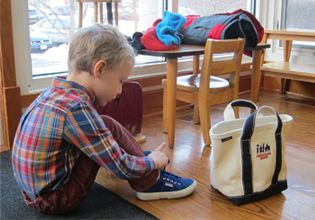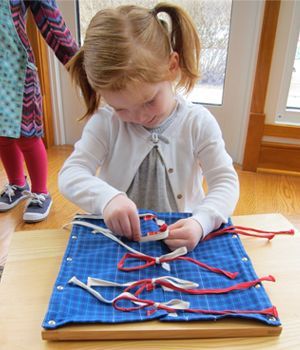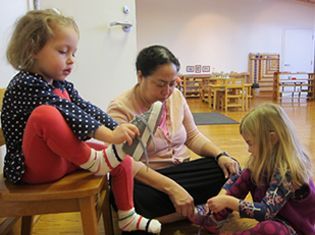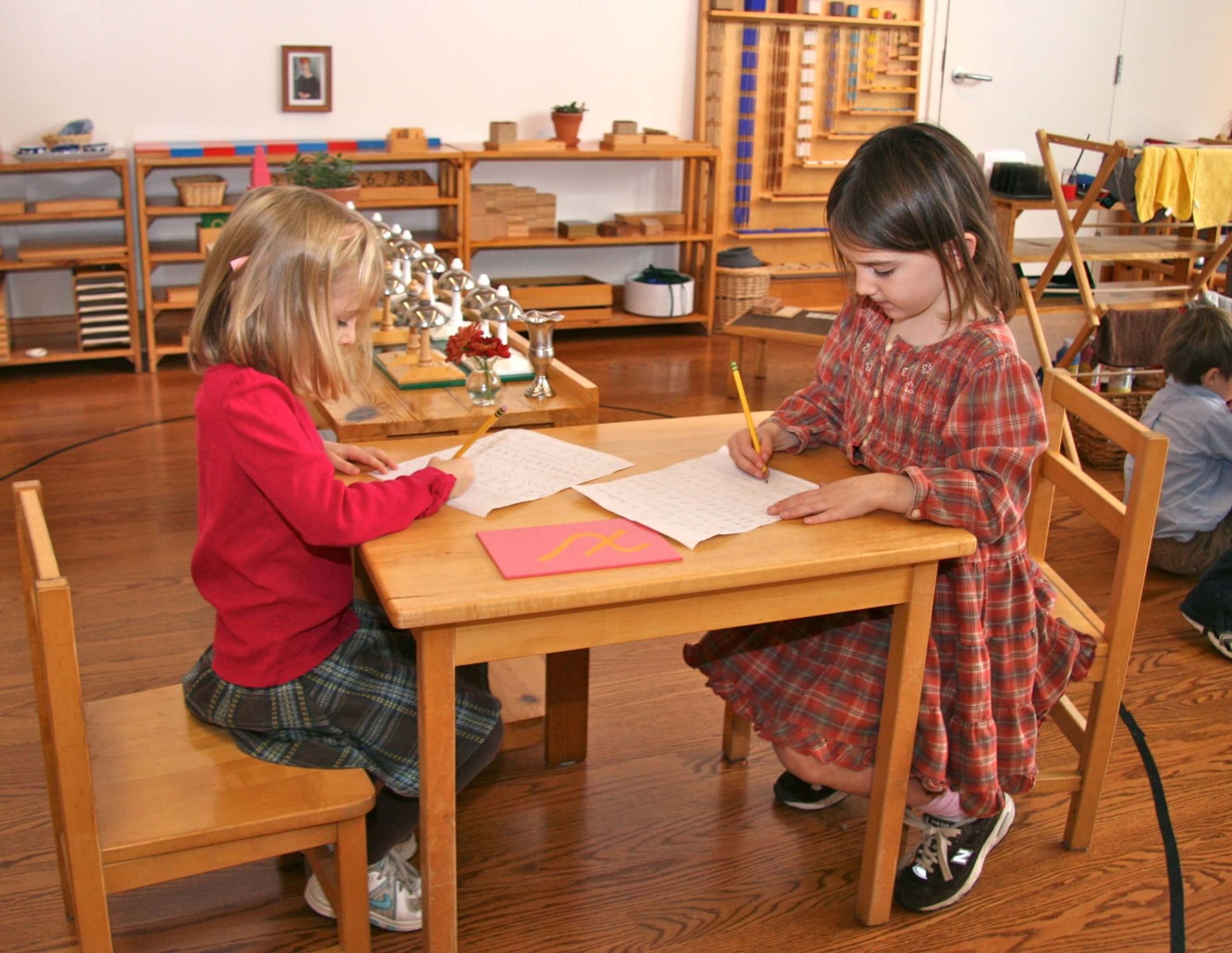
Last week, I wrote about the importance of encouraging dressing skills in young children. As a follow-up, I thought it might be nice to talk about the helping young children learn to tie shoes. My years as a teacher in the Children's House, or Primary classroom, at Forest Bluff School have taught me how valuable this particular dressing skill is to the young child between three and six years of age.
Forest Bluff is one of very few schools that asks young children to wear “tie shoes” from the age of three. In fact, a local shoe-store owner recently told me that “tie shoes” are actually against the dress code of many of our local schools’ early childhood programs!
Tying (and constantly re-tying) a child’s shoes is certainly a hassle. I can understand why some teachers, assistants, and parents don’t want to deal with it. Teaching young children to tie their own shoes isn’t easy either, particularly when they haven’t had the preparation provided by a supportive Montessori classroom and home environment.
So what’s wrong with taking the easy way out? Just because a child can learn to tie his or her shoes at three years of age, does that mean that they should? If children can dress themselves independently with Velcro shoes, why frustrate them (and yourself) by insisting that they learn to tie bows?

Independence is certainly very important, but independence is not all that bow tying has to offer the young child.
Consider what happens when a young child sits down to tie his shoes. According to my Montessori albums, there are twenty-six distinct steps to tying a bow. So many steps to remember! So many movements to perfect! So many chances for something to go wrong (Why does my bow have only one loop? Three loops?). So many opportunities to learn from past mistakes! A child tying a bow has to concentrate deeply, remember and follow a logical sequence of steps, and perform precise fine-motor tasks. As Montessorians, we know that it is exactly this sort of purposeful partnering between the hands and the mind that builds the brain and prepares the child for later academic challenges.
When you look at it this way, Velcro and slip-on shoes simply can't offer the child the same kind of experience.
Of course, I know that waiting for a child to struggle through the act of tying shoes can be exasperating, especially in the beginning. For those of you with “emergent shoe-tyers” at home, here are some tips to help your child succeed:

- Select shoes with a well-structured upper that are easy for your child to take on and off. I’ve had good luck with the thick-yet-flexible canvas uppers on shoes from companies like Keds and Superga. In the beginning, avoid Converse-style shoes with floppy uppers that collapse when the child attempts to put them on. Children also tend to accidentally over-tighten the laces on floppy shoes when they are off the feet, making it nearly impossible for the child to independently put them back on.
- Replace slippery round laces with flat laces. Round laces show up frequently on athletic shoes, and they simply will not stay tied. You can find flat replacement laces in 27 and 36 inch lengths online and in the shoe department at Target.
- Check the length of your child’s shoelaces. Generally speaking, the loops on the finished bows should be nicely and proportionately sized, and the ends of the laces should stop an inch or so above the ground. In the beginning, it is better to err on the side of "too long."
- If you have to replace your child’s laces, there is a good chance that the replacement laces will need to be cut to size. There are several different methods you can use to replace the aglets and keep the cut ends from fraying. (Ian’s Shoelace Site has an entire page dedicated to aglet repair. If you are interested, the site also boasts well-written instructions and diagrams for lacing shoes and tying bows in more ways than you ever thought possible!)
- Give your child lots of time to practice, every day, with the same pair of shoes. Children need lots of repetition to master shoe tying and move the skill into muscle memory. Once your child has tied their first successful bow, make an effort to ensure that he/she wears the same pair of tie shoes on every reasonable occasion until they can tie their shoes with ease. For a few weeks, you might find that you need an abundance of patience and some extra time in your schedule while your child practices putting on and tying these shoes.
In the end, the look on your child’s face will make it all worthwhile!
https://www.youtube.com/watch?v=orspfZ_0U_4&feature=youtu.be&rel=0


